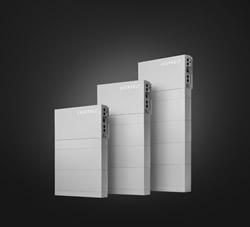Railless systems can sometimes save on logistics costs, come fully assembled, and go up to the roof quickly. Generally, these systems shine at low to moderate roof slopes, snow-loads and wind speeds.
PV System Installation Tips and Training
Susan Stark | Quick Mount PV
Tell us a little bit about Quick Mount PV.
Quick Mount PV is the leading source for mounting rooftop solar. We manufacture building-code-compliant, watertight solar mounting and racking systems. Founded in 2006, Quick Mount PV is committed to sustainable business practices, ongoing industry training and education, and manufacturing in the USA. While we have a reputation of being the “gold standard” , our products truly offer the best value when in comes to solar mounting and racking.
Having spent 5 years in the field training residential solar installers for Quick Mount PV, what would you say are the most challenging roofs to install solar on?
Quick Mount PV makes roof attachments for virtually all roof types, which has put me on some interesting job sites. While slate roofs offer the greatest mount-per-minute challenge, it’s not common enough to cause problems for most installers. Recently I’ve been training installers in Florida, where state-specific building codes that mitigate the risk of high velocity winds and hurricanes have created challenging conditions for solar PV retrofits. Concrete and clay tile roofs, very common in the state, are required to be fully attached, either with nails, screws, foam, or mortar. In most cases, the installer has to break out the tile over the intended mount location. Also, Code there requires flashing of all four sides of any penetration at the underlayment level, as they say that water travels up-slope in Florida! Our Tile Replacement Mount has been a perfect solution for this application, with a built-in flashing plate on the mount and a paintable aluminum tile-replacement flashing that matches most concrete tile profiles.
What products have been developed over the past few years that brought down installation times?
The first day I spent on a roof, I looked around and said, “Where’s Dave?” “Oh, he’s in the truck assembling clamps” the crew-lead said. And he spent most of the morning there! Those were the days of 2-3 day 6kW installs. Pre-assembly and fewer small parts to handle on the roof were key, along with universal-sized module clamps that feature Integrated bonding and grounding. Mounts and flashings have been simplified, such as our L-Mount, that installs in less than 20 seconds. Rail-less systems also drove down install times, but only when they are simple shapes and installed on moderate roof slopes.
Having trained installers on both rail-less and rail-based systems, in your opinion, what are the Pros and Cons of each?
Railless systems can sometimes save on logistics costs, come fully assembled, and go up to the roof quickly. Generally, these systems shine at low to moderate roof slopes, snow-loads and wind speeds. However, complex array designs and obstructions become very hard to lay out. Also, supporting the module frames within recommended cantilevers becomes challenging when installing in portrait orientation on 24” structural members. Attachments must be made at the front and back edges of the module, limiting North/South layout adjustment to a few inches and infringing on the ridge and eave.
Rail-based systems are simpler to layout, have much more flexibility when it comes to odd-shapes, obstructions and cantilevers, and can offer a toe-hold at steeper slopes for installer peace-of-mind. They can support the module anywhere within a wide N/S clamping-zone, and are required in high-velocity wind areas and higher snow loads. Logistics issues have been greatly reduced by the solar distribution market that has popped up to service installers nationwide, reducing the perceived logistics benefit of railless systems.
Quick Mount PV announced recently that they have a company history of zero leaks – why do you feel the company been able to accomplish that?
The company was founded in 2006 in order to provide code-compliant mounting products specific to the solar industry. Previously, installers had to re-purpose roof attachments meant for other industries, sometimes with poor results. Our patented elevated water seal technology changed all that, and combined with quality assurance through ISO manufacturing standards, we’ve never had a case where the mount, when properly chosen and installed, caused a roof leak. We also dedicated a lot of training resources to training over the years, ensuring that our mounts were properly installed.
Why do you feel properly training users of your products is such an important part to the success of Quick Mount PV?
We’ve established that when properly installed, well-designed mounting products won’t leak. Training Installers to do it right is critical to the reputation and liability of their employer, as well as the reputation of the solar industry as a whole. We’ve even deployed a mobile training center in order to bring this critical training direct to installers that are unable to attend Industry events. We also train distributor staff to choose the correct mounting product, and educate code officials on developments that affect permitting and inspections.
Hiring quality employees can be quite a challenge for a solar installation company. In your opinion where's the best place to look for new recruits?
I was on a jobsite a few weeks ago where one of the guys on the roof had just been hired form a local mobile phone shop. He didn’t have appropriate clothing, shoes, and didn’t know how to use a hammer or caulk gun. In my opinion, vocational or trade school graduates, veterans, and those with prior construction and specifically roofing skills make the best trainees.
What does a company need to offer to lure and hang onto quality solar installers?
Creating Installation teams that operate with a positive attitude in a production-like manner is really all about leadership and camaraderie. Happy employees will continue to come to work, and will refer their friends as well. I’ve seen a lot of turnover due to challenging working conditions on the roof and a lack of leadership at the crew-lead level. Investments in job-specific skills training, safety, and leadership will pay dividends in the long run.
 About Susan Stark, Director of Training and Technical Sales:
About Susan Stark, Director of Training and Technical Sales:
Susan started her career in solar in 2010 and has been NABCEP Certified since 2013. She has earned four Professional Certificates from Solar Energy International (SEI), including the Solar Professionals Trainer Certificate. Susan is also a RISE Certified Solar Roofing Professional and holds OSHA10 Construction Certification. Since joining the company in 2014 as a Technical Trainer, Sue has held multiple senior roles in the organization, including Director of Technical Sales, and Director of Channel Sales, East. Prior to entering the solar industry, Sue was the co-owner of a Construction and Safety Equipment Distributor. Off duty, Sue enjoys international dual-sport motorcycling and sea kayaking.
The content & opinions in this article are the author’s and do not necessarily represent the views of AltEnergyMag
Comments (0)
This post does not have any comments. Be the first to leave a comment below.
Featured Product

